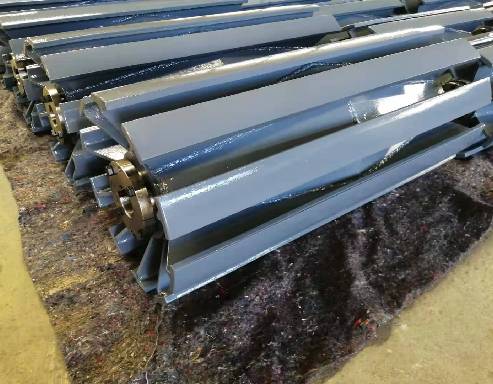 Afrikaans
Afrikaans  Albanian
Albanian  Amharic
Amharic  Arabic
Arabic  Armenian
Armenian  Azerbaijani
Azerbaijani  Basque
Basque  Belarusian
Belarusian  Bengali
Bengali  Bosnian
Bosnian  Bulgarian
Bulgarian  Catalan
Catalan  Cebuano
Cebuano  Corsican
Corsican  Croatian
Croatian  Czech
Czech  Danish
Danish  Dutch
Dutch  English
English  Esperanto
Esperanto  Estonian
Estonian  Finnish
Finnish  French
French  Frisian
Frisian  Galician
Galician  Georgian
Georgian  German
German  Greek
Greek  Gujarati
Gujarati  Haitian Creole
Haitian Creole  hausa
hausa  hawaiian
hawaiian  Hebrew
Hebrew  Hindi
Hindi  Miao
Miao  Hungarian
Hungarian  Icelandic
Icelandic  igbo
igbo  Indonesian
Indonesian  irish
irish  Italian
Italian  Japanese
Japanese  Javanese
Javanese  Kannada
Kannada  kazakh
kazakh  Khmer
Khmer  Rwandese
Rwandese  Korean
Korean  Kurdish
Kurdish  Kyrgyz
Kyrgyz  Lao
Lao  Latin
Latin  Latvian
Latvian  Lithuanian
Lithuanian  Luxembourgish
Luxembourgish  Macedonian
Macedonian  Malgashi
Malgashi  Malay
Malay  Malayalam
Malayalam  Maltese
Maltese  Maori
Maori  Marathi
Marathi  Mongolian
Mongolian  Myanmar
Myanmar  Nepali
Nepali  Norwegian
Norwegian  Norwegian
Norwegian  Occitan
Occitan  Pashto
Pashto  Persian
Persian  Polish
Polish  Portuguese
Portuguese  Punjabi
Punjabi  Romanian
Romanian  Russian
Russian  Samoan
Samoan  Scottish Gaelic
Scottish Gaelic  Serbian
Serbian  Sesotho
Sesotho  Shona
Shona  Sindhi
Sindhi  Sinhala
Sinhala  Slovak
Slovak  Slovenian
Slovenian  Somali
Somali  Spanish
Spanish  Sundanese
Sundanese  Swahili
Swahili  Swedish
Swedish  Tagalog
Tagalog  Tajik
Tajik  Tamil
Tamil  Tatar
Tatar  Telugu
Telugu  Thai
Thai  Turkish
Turkish  Turkmen
Turkmen  Ukrainian
Ukrainian  Urdu
Urdu  Uighur
Uighur  Uzbek
Uzbek  Vietnamese
Vietnamese  Welsh
Welsh  Bantu
Bantu  Yiddish
Yiddish  Yoruba
Yoruba  Zulu
Zulu Conveyor Pulley Product Guide and Specifications for Optimal Performance and Durability
Understanding Conveyor Pulley Catalogues A Comprehensive Guide
Conveyor systems are integral to many industries, from manufacturing to mining. At the heart of these systems lies one of the most crucial components the conveyor pulley. A conveyor pulley serves various purposes, including transmitting power, redirecting belt movement, and maintaining tension in the conveyor belt. To help users make informed choices, manufacturers often provide a detailed conveyor pulley catalogue. This article will explore what a conveyor pulley catalogue typically includes and its significance in the overall conveyor system design.
A conveyor pulley catalogue serves as a comprehensive resource for engineers, procurement specialists, and maintenance teams. It typically contains critical information about different types of pulleys, their specifications, material construction, and application guidelines. Among the essential aspects covered in the catalogue are types of pulleys, such as drive pulleys, bend pulleys, and tail pulleys. Each style has its unique functionality and is designed for specific applications within the conveyor system.
For instance, drive pulleys are fundamental as they are responsible for transmitting power to the conveyor belt. They need to be robust and capable of withstanding high torque loads. In contrast, bend pulleys are used to change the direction of the conveyor belt and are vital for ensuring the smooth operation of the entire system. Tail pulleys, located at the end of the conveyor system, help maintain proper tension on the belt and facilitate the return of the belt to the loop.
Another important aspect featured in a conveyor pulley catalogue is the detailed technical specifications for each pulley type. This includes dimensions, weight, load capacity, and materials used in construction, which can range from steel to rubber covered options. This information is critical for engineers who need to determine compatibility with their existing systems. High-quality materials and appropriate engineering can significantly enhance the durability and performance of the conveyor system.
conveyor pulley catalogue

Furthermore, the catalogue often highlights various design features intended to improve performance and safety. For instance, many modern pulley designs incorporate elements such as crowned surfaces, which help keep the conveyor belt centered and reduce wear. Additionally, features such as rubber lagging may be specified for drive pulleys to enhance friction and prevent slippage. These innovations contribute to increased efficiency and longevity of conveyor systems.
In addition to technical specifications, a conveyor pulley catalogue may also include guidelines for installation, maintenance, and troubleshooting. Proper installation is crucial, as it impacts the overall efficiency and safety of the conveyor system. Maintenance guidelines can help operators extend the life of the pulleys and minimize downtime. Troubleshooting tips ensure that users can quickly address issues before they escalate into significant problems.
When selecting pulleys from a catalogue, it is essential to consider the specific requirements of each application. Factors such as the material being transported, conveyor length, and environmental conditions can influence the choice of pulleys. Thus, consulting with experts and reviewing the catalogue thoroughly can help ensure an effective selection process.
In conclusion, a conveyor pulley catalogue is an indispensable tool for anyone involved in the design, selection, and maintenance of conveyor systems. By understanding the various types of pulleys, their specifications, design features, and installation guidelines, users can make informed decisions that enhance the efficiency and reliability of their conveyor operations. This knowledge is vital in ensuring the smooth functioning of industrial processes, ultimately leading to increased productivity and safety in the workplace.
-
Revolutionizing Conveyor Reliability with Advanced Rubber Lagging PulleysNewsJul.22,2025
-
Powering Precision and Durability with Expert Manufacturers of Conveyor ComponentsNewsJul.22,2025
-
Optimizing Conveyor Systems with Advanced Conveyor AccessoriesNewsJul.22,2025
-
Maximize Conveyor Efficiency with Quality Conveyor Idler PulleysNewsJul.22,2025
-
Future-Proof Your Conveyor System with High-Performance Polyurethane RollerNewsJul.22,2025
-
Driving Efficiency Forward with Quality Idlers and RollersNewsJul.22,2025





























